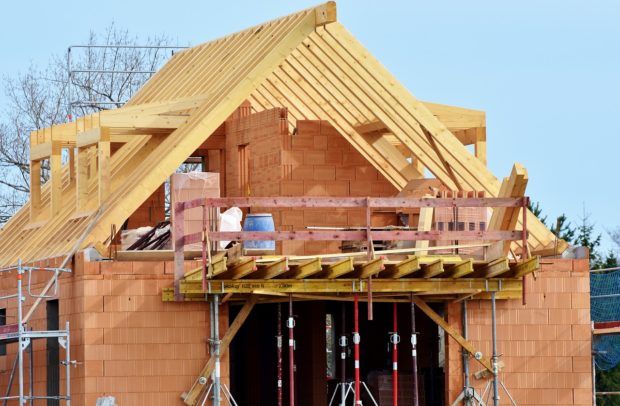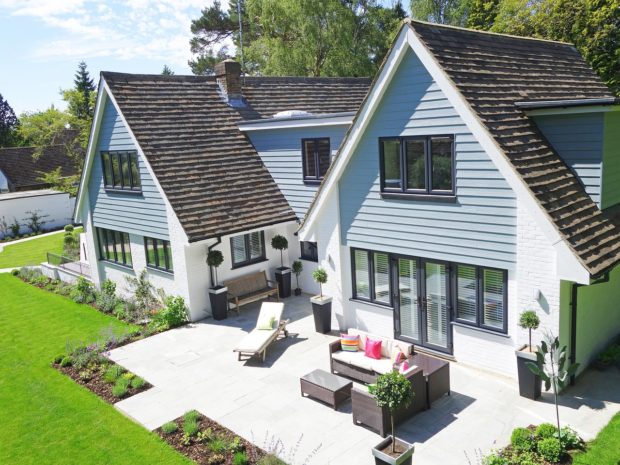The building sector is seeing a rise in the eco-friendly movement. Builders are increasingly looking to carry out sustainable work to help them save money, draw in new clients, and save the environment.
You might believe going green means putting your finances last to protect the environment. After all, eco-friendly-produced clothes catch a premium on store shelves and become more expensive, as well as organic vegetables being more expensive. Going green, though, can save you money for construction which many people are unaware of.
In actuality, more buyers choose to construct green due to financial incentives than for environmental reasons. When building a ‘green’ home you can save money, energy, and water by building sustainably. You can also enhance the value of the home, relieve the burden on the infrastructure, and be eligible for tax benefits from the Government.
Going green for engineers, architects, developers, and contractors means choosing the best raw materials and employing clever design to build a more effective structure. The operations that consume the most energy in a home, for instance, are heating and cooling. However, contractors can make changes to boost effectiveness. By doing this in advance, they can ensure that a structure faces a specific direction to allow for greater natural heat in a cold area. Or, on the other hand, in a hot region, they could put it in a position with consistent shade.

A well-thought-out design or recycled materials can frequently help you save money. Even when the green alternative is more expensive, it is typically an initial expenditure resulting in larger long-term savings.
However, to find a builder who builds green can be challenging as some are set back in their ways. However, many need to realise that they can save money when they go green. So here we will go through how building green can save builders money.
Maintenance Is Less
Maintenance and upkeep costs are among the most frequently disregarded ways a green home can save money. Durability, longevity, and low upkeep are all characteristics of green home construction.

It can be robust and long-lasting flooring, minimal maintenance finishes, exterior sidings that are UV and weather-resistant, or any number of other environmentally friendly building techniques. Making a selection with the long-term money in mind when choosing the materials for your home might be one of the most environmentally beneficial and financially wise choices builders will ever make.
Reduce The Energy Use of Large Tools or Machinery
Maintaining control over your tools and equipment can help you save money by preventing excessive energy use by machinery and managing rising utility costs. Numerous powerful tools and machines are used on construction sites to complete tasks. Still, even the most energy-hungry ones can be controlled to use less energy than is necessary.
Ensure that every switch and control on your equipment is properly labelled and understood by every employee using it. Thanks to this, they will be able to use them more effectively and turn them off more quickly as needed.
If you produce building materials, fixtures, or fittings or use machines that require air compressors to operate, performing routine maintenance inspections on the machinery can assist find air leaks that reduce energy efficiency. At the point of egress, escaping air can frequently be heard. Keep energy loss from leaking compressors to prevent your company from suffering!
Costs of Water
Sustainable construction nearly usually results in higher efficiency, which lowers energy costs. Green construction can cost up to 2% more than conventional building methods. However, you can save that money in no time, thanks to decreased utility costs.
Businesses Using Energy-Saving Measures Qualify For Tax Benefits
Businesses must pay environmental taxes under UK legislation on their energy, gas, and solid fuels purchases under UK legislation. However, you can qualify for tax relief if your company meets specific criteria, such as a small one that doesn’t use much energy. In certain circumstances, investing in energy-efficient technology as part of a larger strategy to cut carbon emissions may also entitle you to tax benefits under the Climate Change Levy legislation.
For information on which firms qualify for tax relief and how to apply, consult the UK government’s guidelines. To better understand the procedure, it would be worthwhile to speak with an accountant.
Green Building Materials
Think about utilising recycled steel, drywall, glass, and other materials. Along with the environmental advantage, you’ll frequently experience an instant cost reduction. Additionally, use sustainable resources, such as bamboo or recycled fibre carpets, whenever possible to replace conventional flooring. Long-term savings are certainly possible due to the decrease in maintenance using eco-friendly materials.
The green alternative becomes incredibly tempting when government refunds and other financial incentives are included.
Water Management
For builders, managing stormwater and runoff should be a top focus to prevent any issues from arising. After all, there is an increase in the number of storms and floods brought on by extreme weather patterns, and more land is being constructed using waterproof materials.
The latter puts extra strain on sewage systems and the environment by preventing rainfall and runoff from soaking into the ground. Consider alternatives to concrete or asphalt barriers to reduce this problem and reduce maintenance costs or the cost of more materials.
ROI
Investors choose eco-friendly building materials and fittings. Investors will provide more money for a building, and the more energy-efficient it is, meaning the property will sell for more, increasing the builder’s pay rate.
Eco-friendly characteristics promote construction sales. Eco-friendly builds make the selling process a more satisfying and successful experience for commercial property owners who are thinking about selling sometime in the next several years.
Predicting which green upgrades will influence purchasers the most might be challenging. Getting a sustainability audit is one method business property owners can use to determine where the most work needs to be done. After the audit, the property owner and their business contractor can select which changes will be made, how they will be made, and other details.
